This is not your usual backyard camera trapping.
You’ve undoubtedly seen the images I mean: grainy, dark photos of elusive critters passing in the night. Sure, they’re cool. And they are often provide important scientific evidence of creatures that we seldom see.
But such camera trap pictures are not quality wildlife art.
Enter Jonny Armstrong.
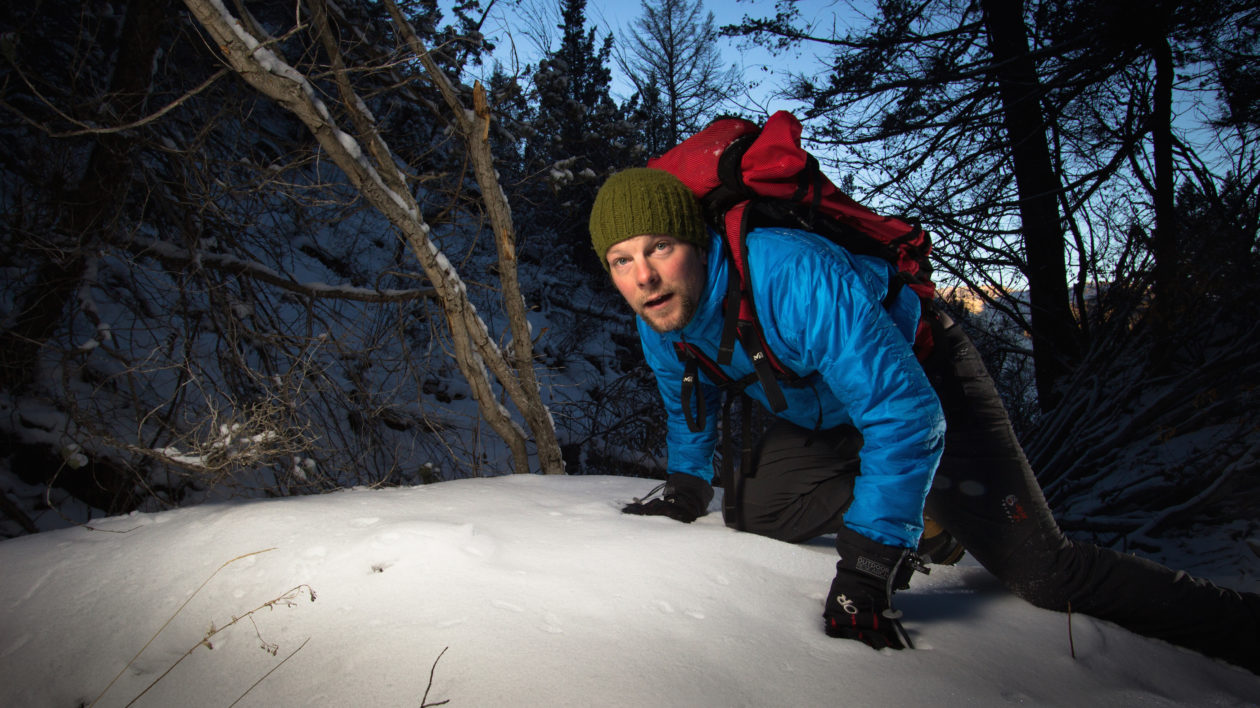
Armstrong is a fish biologist and, most recently, a David H. Smith Conservation Research Fellow at the University of Wyoming. I first interviewed him about his surprising findings on the ecology of salmon rivers. It turns out, he’s also doing groundbreaking work with camera trapping – combining technical skill, studio lighting and wildlife knowledge to create stunning, artistic images.
At first glance, these images almost don’t look real. Then a different idea takes hold: these photos don’t look real because they show wildlife as we almost never see them. Photos taken not with a telephoto lens from just a few feet away. At night.
You could spend months – years – staked out and not capture such images. Camera traps can. But it’s not easy. This is more than putting up a trail camera over a game trail and seeing what comes by.
First, Armstrong deploys his tools. He has a motion sensor, an SLR camera, plenty of battery power and studio lighting. He has to know how the animal moves. He often uses fur trapping techniques – clearing a trail to make it more appealing to an animal, directing it to one spot – to get the perfect shot.
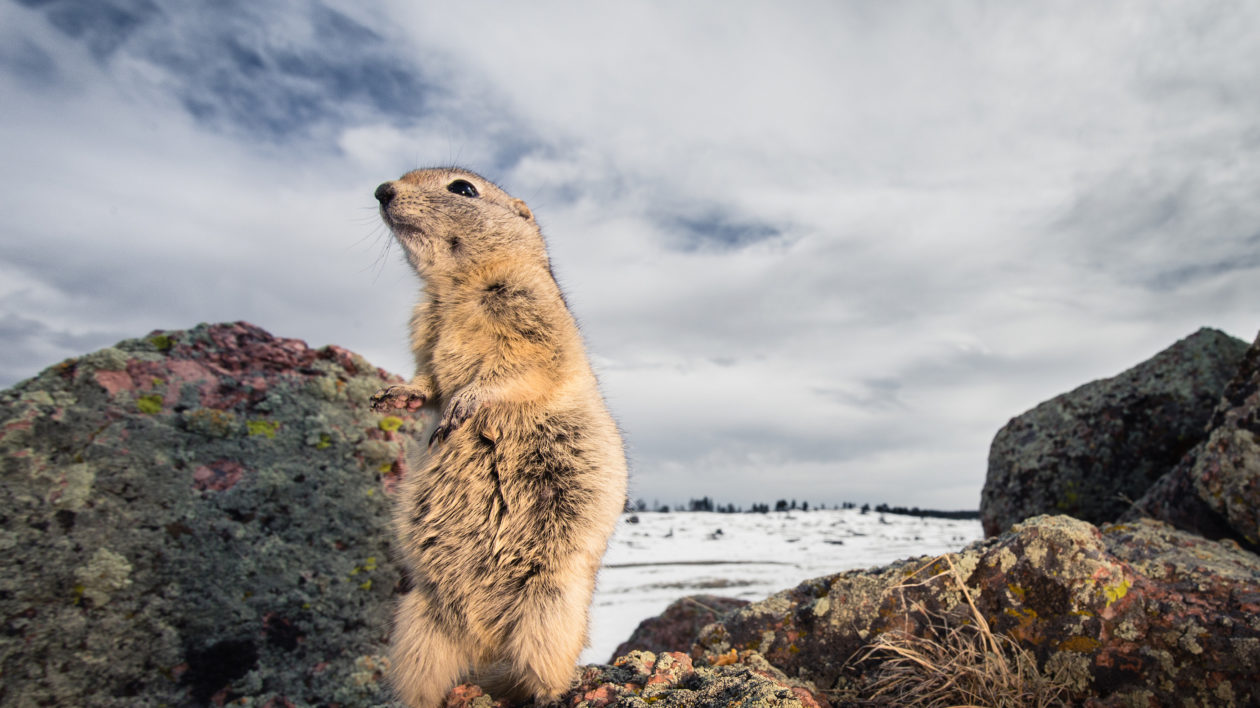
“That means that I have all lights focused in one shot,” says Armstrong. “When it works, you get the best photo. But that means there is no room for error.”
And it also means lots of errors. He recounts the time he set up on a game trail used by a mountain lion with Denver’s city lights in the background. The camera was out for weeks. A friend, David Neils, set up a cheap trail camera set on video nearby.
Neils’ camera captured this mountain lion grooming itself just feet out of range of Armstrong’s set-up. The still camera never captured the image despite inarguable video proof of the mountain lion’s presence. He missed the shot-of-a-lifetime by the slimmest of margins. The consolation prize? A long-eared owl.
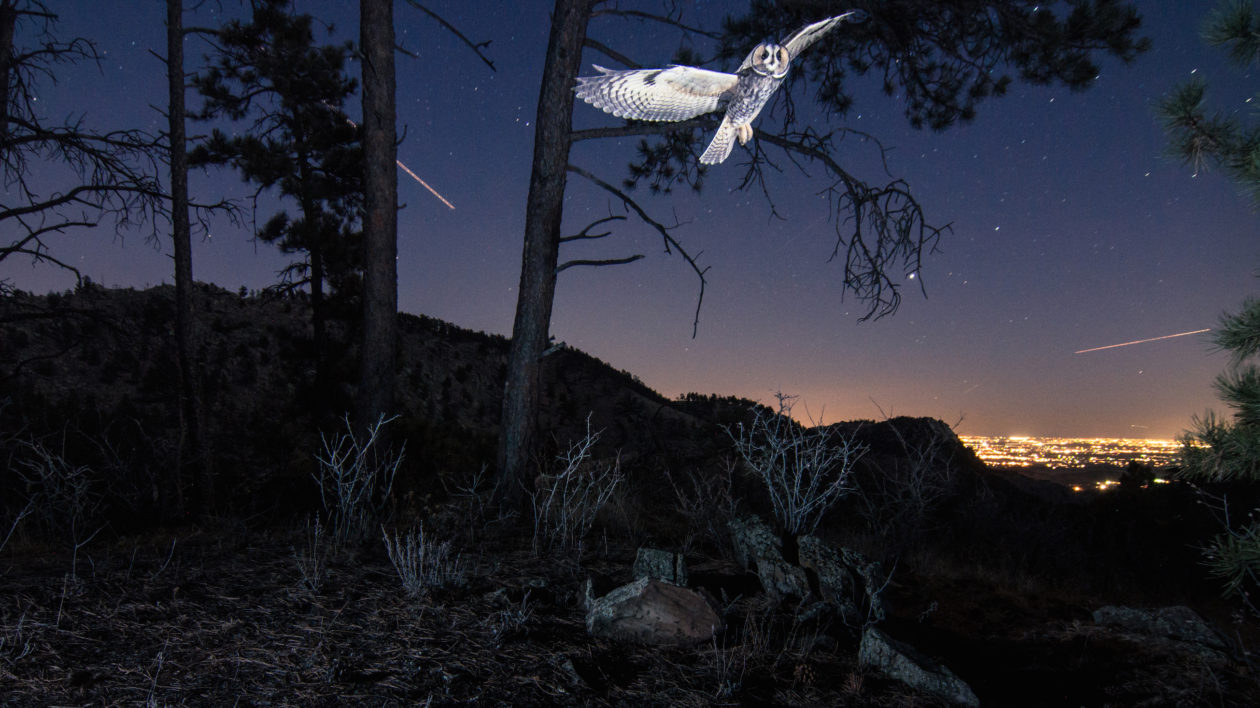
All sorts of problems can befall a camera in the wild. Armstrong’s recent work – camera trapping focused on Wyoming wildlife – meant cameras out in frigid cold and wind.
Sometimes it works out; he tracked a mountain lion to a deer kill, then set up his trap. That night, the camera captured several mountain lion images before freezing up in -30 degree temperatures.
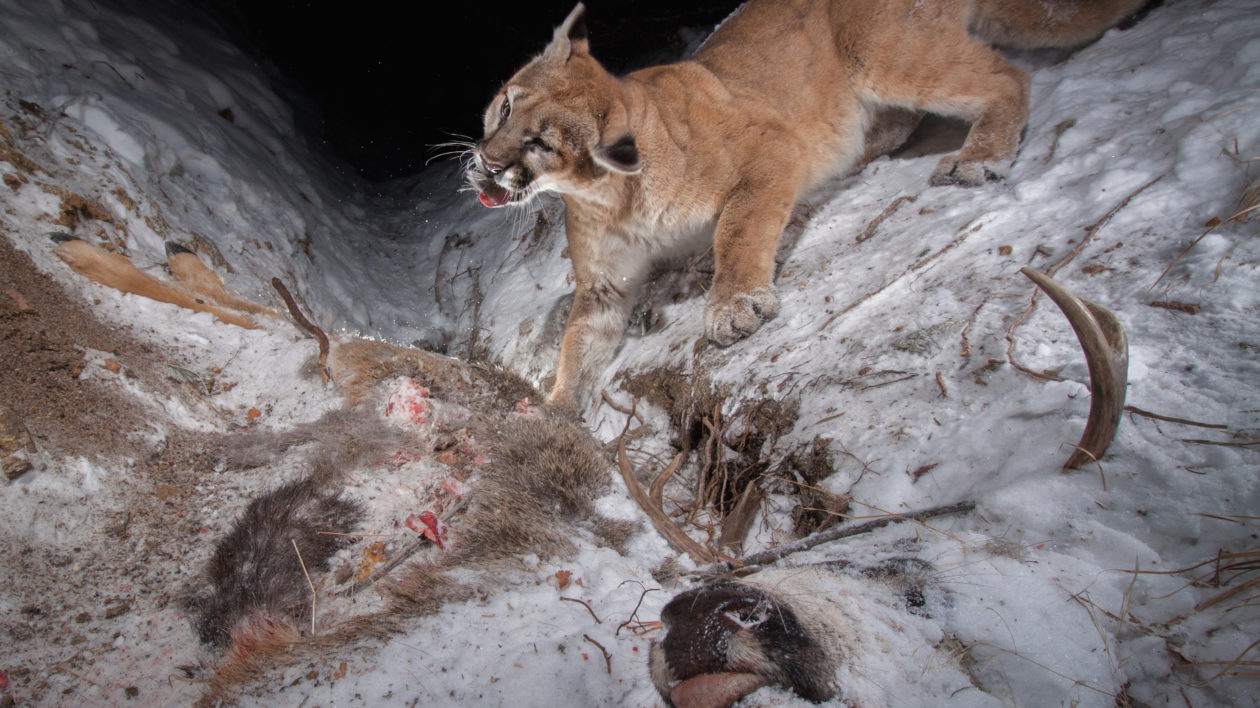
Other times, the wind knocks over the camera, capturing only a sideways look at an animal’s leg.
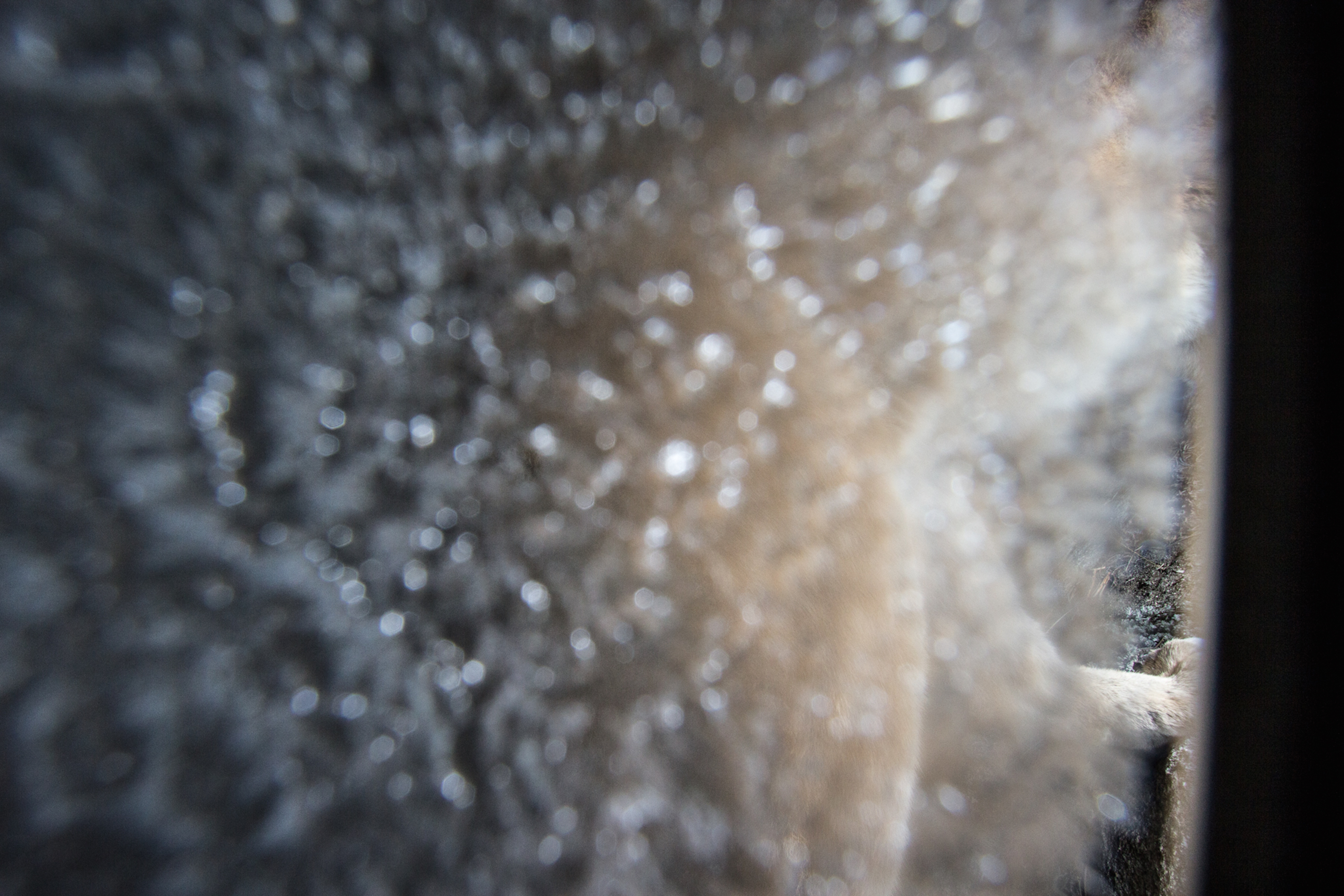
This form of camera trapping means focusing on one species, but other animals don’t know that. Super-abundant deer mice can trip the motion sensor hundreds of times in one night, quickly burning the battery. When the camera is set up over kills, common daytime scavengers like magpies can have a similar effect.
Popular trails for wildlife are also often popular trails for humans – and their dogs.
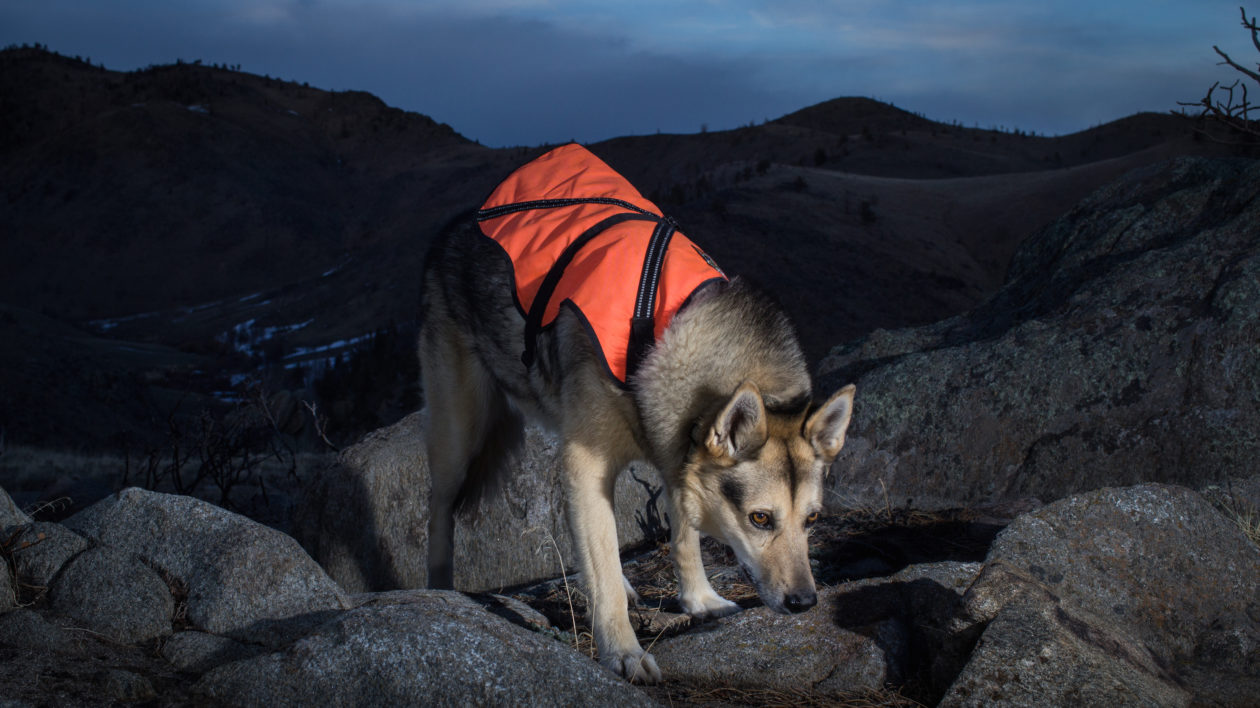
Cows grazing on federal land knock over cameras. They also often end up in the frame. A herd of cows can burn through batteries in an afternoon.
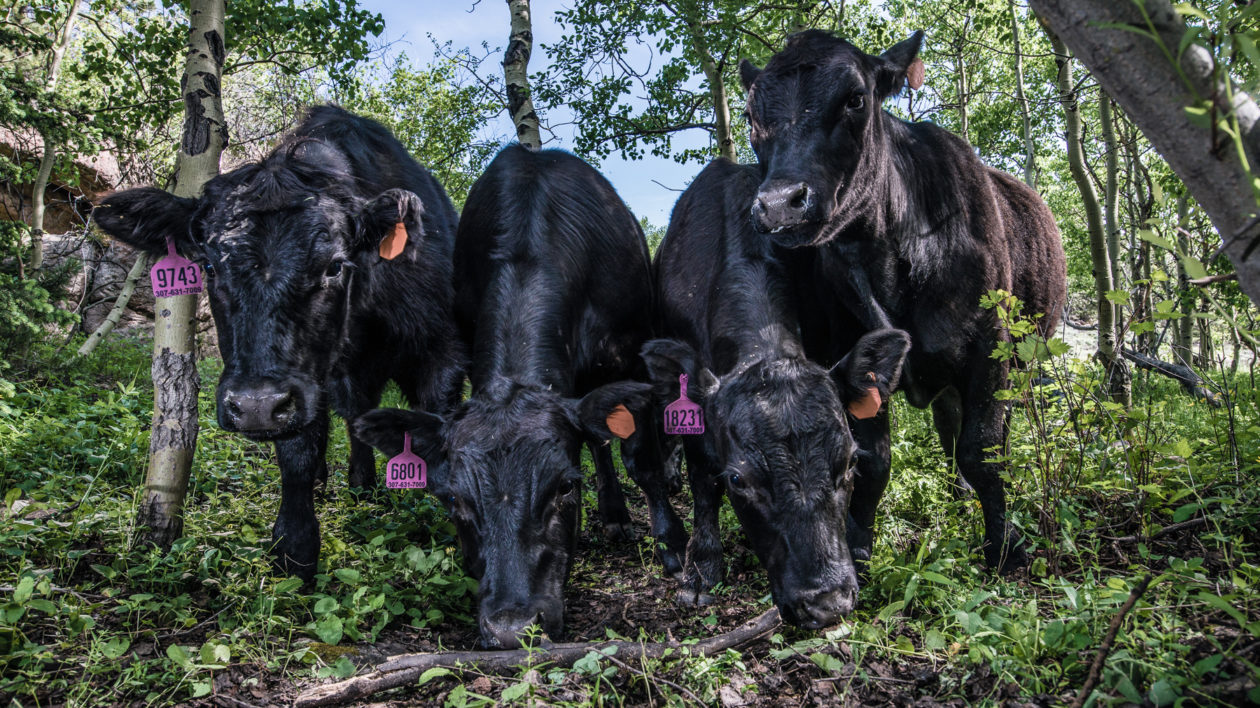
And then there are black bears.
“When you get a black bear, you see one or two images, then the bear trashes the set,” Armstrong says. “It’s not unusual to see a photo of a bear followed by a bunch of smeary images caused by the bear nosing the lens.”
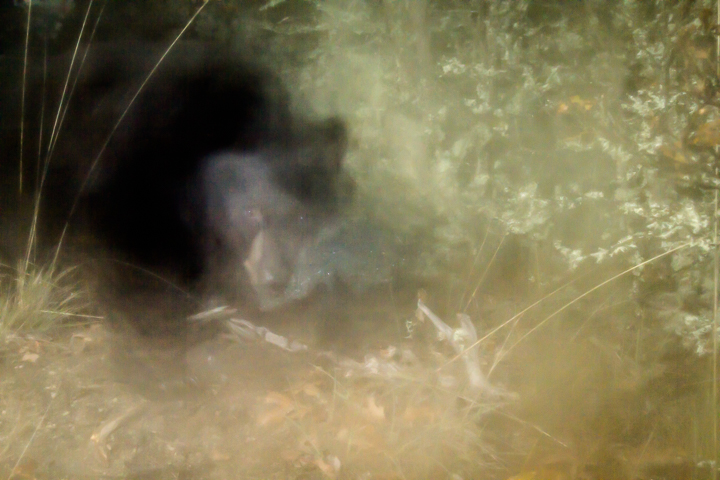
And that’s nothing compared to Kenya, where Armstrong spent one month camera trapping earlier in the year. “It was not unusual to have your camera stepped on by an elephant or trashed by a hyena,” he says.
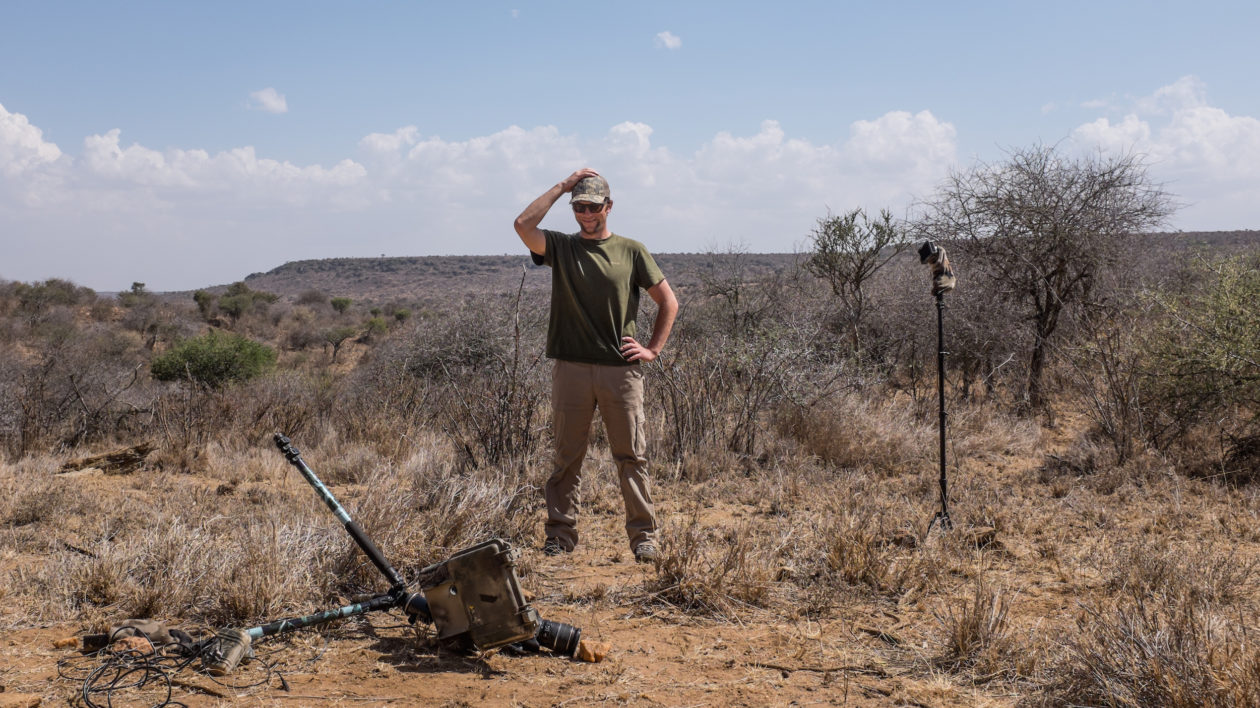
But the rewards are worth it. “It is basically like setting up a studio in nature,” says Armstrong. “It gives you an intimate view of animals that are seldom seen. I have never seen a wild mountain lion in real life. But this set-up gives a view of what a mountain lion is doing just a few feet away.”
And it even has advantages over traditional wildlife photography. “The challenge of lighting also creates incredible creative opportunities,” he says. “You suddenly have control over the light. You don’t have to rely on ambient light like you usually do in nature photography.”
Armstrong’s salmon research reveals there’s a lot more going on in a river than meets the eye at first glance – a world of feast and famine that escapes the eye. He sees his camera trapping in much the same way.
“When you walk through a lodgepole pine forest in the daytime, you might see chickadees and red squirrels, but it looks as if not much is happening. At times, it can almost seem lifeless,” he says. “But the camera trap shows a different reality. It shows there are large predators living out their lives.”

Armstrong has teamed up with University of Wyoming fine arts photographer Bailey Russel for an exhibition, Wild Portraits, opening September 2 at the University of Wyoming in Laramie, sponsored by the University’s Biodiversity Institute.
This is a peek at that exhibition, showing a marriage of science and art and technology. And if you can’t make it in person, we’ll feature more of Armstrong’s images in the coming months.
With the technology requirements, time investment (to capture one stunning image often takes weeks or months) and extensive field time, these images would be impossible to replicate with the trail camera you buy at the local discount store. But that shouldn’t dissuade you.
“You can buy a trail camera very cheaply now,” says Armstrong. “And that opens up a whole new form of nature recreation. It can also create a connection to species we don’t normally see. The species that we connect with through fishing, hunting and birding all have a constituency. Maybe camera trapping can create a constituency for wildlife that we almost never see.”
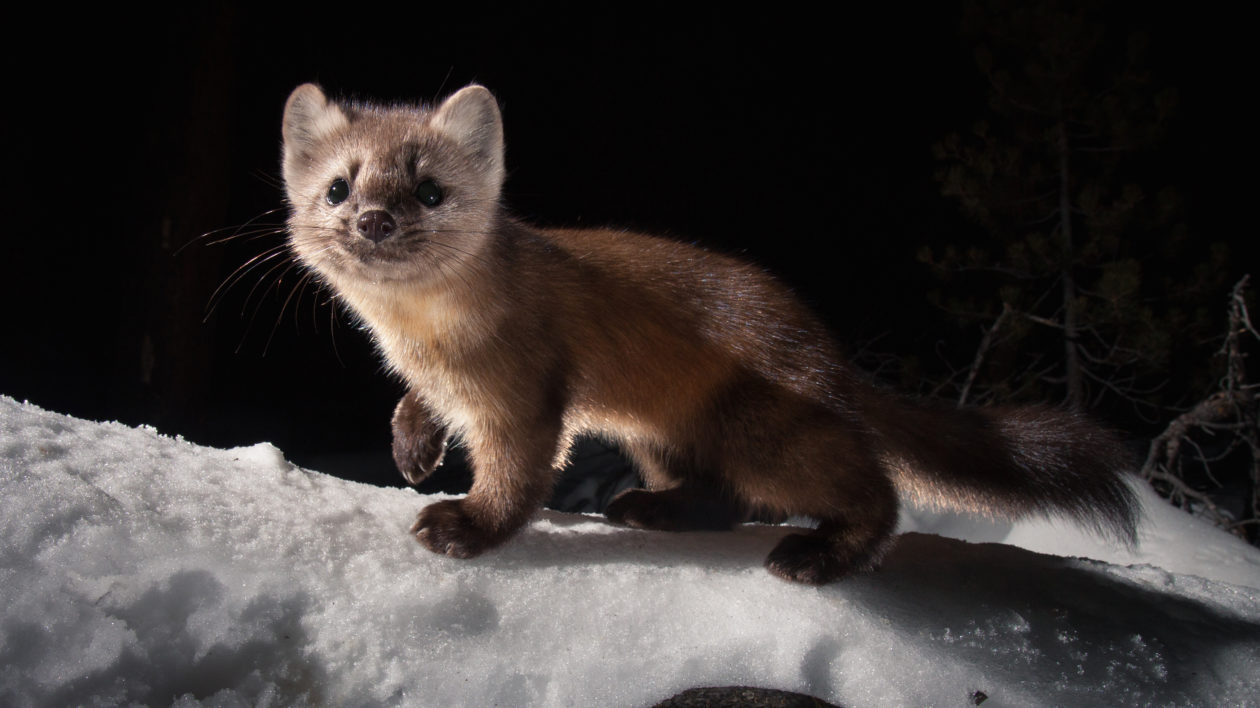
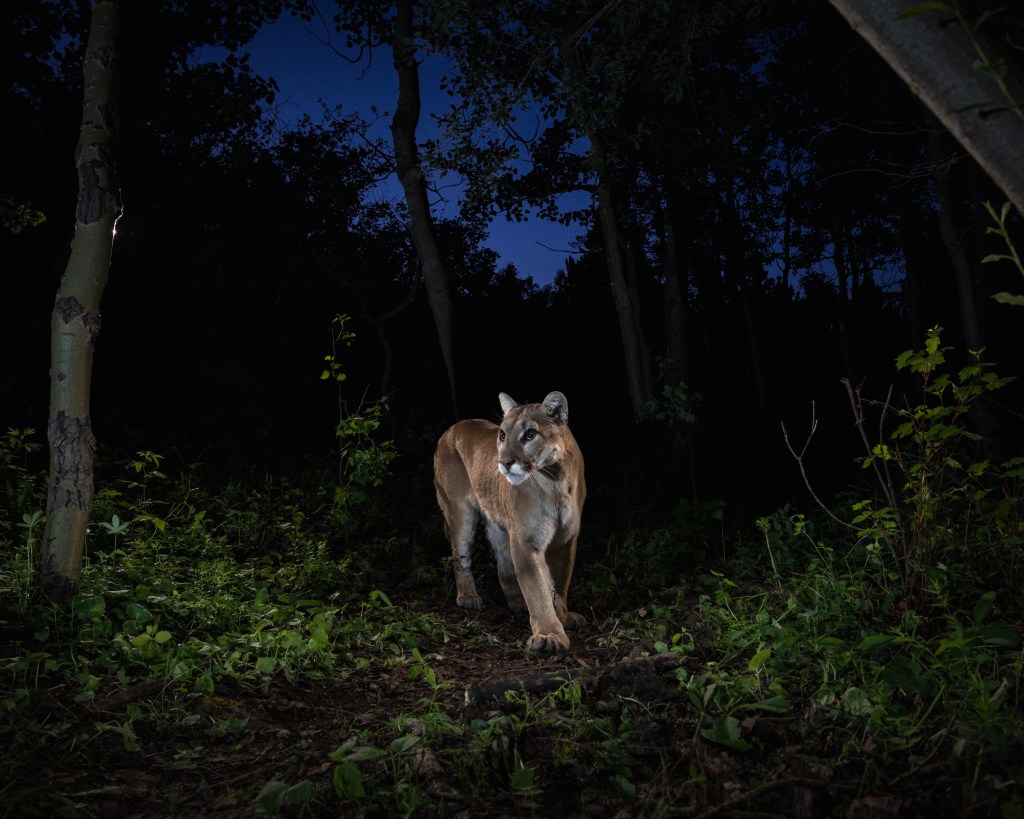



Thank you for this wonderful presentation; I wish I lived closer to Wyoming to see the exhibit at the University. Fraser, VA